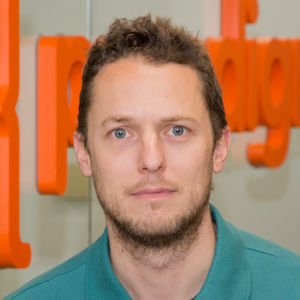These days, suddenly every internet company, even the stuffiest consultancy firms, claim to work in an agile way, but, is this true? And, if it is true that everyone is now agile... where is the differential value?

First stage: the use of agile only in development teams
In my experience of recent years working with different companies and sectors, I have seen that the first stage of agile adoption typically begins with its use solely by development teams. And this is where 90% of companies that consider themselves agile stop: ‘a team of programmers in a development environment delivering software every three weeks’.
But agility is much more than that, its objective is to reduce the time between when an idea is generated and when it is made available to the client. Because what good is it to develop in an agile way if the rest of the company follows a different rhythm?
Second stage: incorporation of systems profiles
In a second stage of maturity, systems profiles are typically incorporated into the agile team, collaborating with the development team and adding automations that allow the time between the software delivery and its production roll-out to be cut.
This stage has enormous benefits, as it succeeds in bringing about a ceasefire in the traditional development-systems war in big companies. But the reality is that the vast majority of Spanish companies, in general, have still not overcome this second step.
Now the question is, what good is it to have agile technical teams if you work with an external design agency that is not integrated into developments? Companies that work with design agencies far removed from their technical teams have not yet realised that software projects are something living. A software project is not comparable to a set engineering project like a bridge or a building, it is something that needs constant evolution and modification of its functionalities in consideration of the client, and most certainly with a meticulous user experience.
Third stage: relying on user experience profiles
This is why**, in a third stage of maturity**, user experience profiles are incorporated into the cycle. From the layout designer who enjoys a more natural integration with the development team, to the designers and pure UX who are charged with defining the functionality a little bit ahead of the development team, maintaining a perfect harmony between frequent deliveries of functionality and shaping new initiatives, as Jeff Patton explained so well with his Dual Track idea.
Fourth stage: adding quality profiles to the team
If you have reached this level of adoption, you have a multidisciplinary team that carries out a complete delivery every three weeks, but what happens to a department that works outside of the rest of the company and manages its own times? Quality.
For this reason, in a fourth stage, quality profiles are usually incorporated into the team. They are incorporated from the identification of product backlog items, adding to each one acceptance criteria that afterwards, during development, will become automated tests, thus also eliminating all the time used by traditional quality departments in manually testing applications after each delivery.
Very few companies in Spain have reached this level of maturity, but there is even yet room for improvement. The question is: are you agile throughout the cycle, from when an idea is generated to when it’s put into production? Because, don’t forget, this is the real objective.
It’s very common in the development of a new product that a strategy firm or a marketing department uses up six months defining a new product idea and afterwards the rush begins. The technical teams are pressed to have everything available in three months, trying to make up for lost time, does this make sense?

Fifth stage: incorporation of strategy
Therefore, in the stage of complete maturity, agile methods incorporate strategy, integrating ideas that come from startup culture, such as the MVP and the constant validation of new business ideas in an iterative cycle.
How is this done? You need to incorporate digital strategy profiles, capable of identifying disruptive business in an environment where almost everything is already invented. Profiles that work in a different way to a traditional business consultant, using co-creation dynamics to cut times and with a closer relationship with the technical team.
For strategy to be effective it has to go hand-in-hand with analytics. Analytic profiles also have to be involved from the conceptualisation phase of the project, helping the product owner to define the business’s expected KPIs when the decision is made to tackle a new product.

Because, in the end, the most important thing is not the budget nor the date, but that which we are going to achieve thanks to the project, what we are going to enter, the clients we will gain, etc. These analytic profiles are also involved in the refinement of each sprint, identifying for each item of the product backlog the indicators to measure. This will help us afterwards, once each functionality is launched on the market, to evaluate whether the result has been the desired one and reprioritise new functionalities according to this information.
If you really are agile it is because you work in a company that has broken down the walls between departments and is organised around your products, which is what really matters to your clients.
Each product team needs to include all the profiles necessary in the scope of each company to bring forward the product in its entirety. For example, in other companies where security is more important, security, auditing and marketing profiles most be incorporated into the team.
Because being agile cuts time from when the business has an idea to when this idea is put into production, and this is why anyone that has anything to do with it has to be involved in work cycles from one end to the other.
So the question is: do all companies who call themselves agile do this? Of course not, and neither is this something that can be achieved overnight. We at Paradigma have spent ten years perfecting the process, during which we have come through all the steps outlined in this post, yet we still have several agile Coach and an agile community to help us to continue to improve.
Comments are moderated and will only be visible if they add to the discussion in a constructive way. If you disagree with a point, please, be polite.




Tell us what you think.